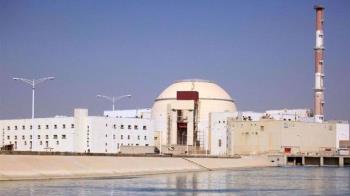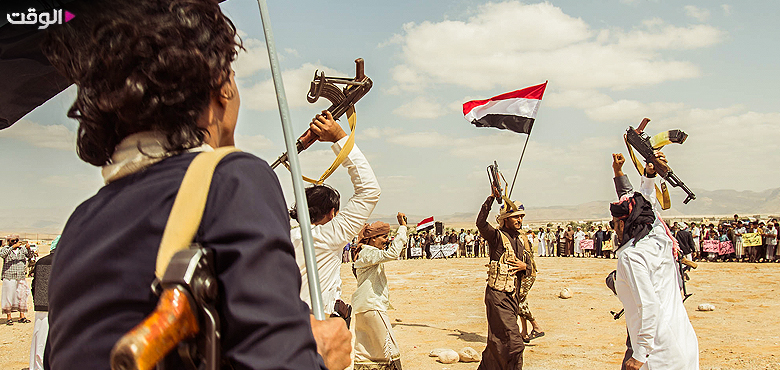Alwaght- As the central and western Yemeni fronts are squeezing Saudi Arabia, UAE, and their mercenaries and the aggression forces sink in deepening Yemen war swamp day by day, the situation in the eastern parts of Yemen is not any better for the Saudis as Riyadh's several-year plans to get a toehold in Al-Mahra province is running into substantial challenges.
In recent days, local media have reported widespread sit-ins and protests by people of Al-Mahra against the continued military presence of Saudi Arabia, as well as Britain, and vowed they will continue demonstrations until the "occupiers' exit" from their province.
The "committee of peaceful sit-in" reopened the case of "tunnel incident", in which protesters in 2018 were killed by the Saudi forces.
"Today marks the third anniversary of the crime in which Saudi Arabia and its affiliates shot at demonstrators in the tunnel area on November 13, 2018, killing two young men named Nasser Saeed Ahmad Nashwan and Ali Ahmad Arara," a statement by the committee read.
The committee in a previous statement had said: "This heinous massacre revealed the true face of the Saudi-Emirati coalition and its mercenaries in Al-Mehra to drag the province into chaos and divide the social structure." The protesters reiterated their demand that "the perpetrators of this massacre should be brought to justice for fair punishment."
At its last meeting last Thursday morning, chaired by Sheikh Ali Salem al-Harizi, the sit-in committee even threatened with a direct military action against Saudi and British troops in the province should they refuse to pull out.
Al-Harizi said that all Yemenis must unite to expel the Saudi-Emirati occupiers who continue to torture the Yemeni people "by any means."
With increasing protests over the presence of Saudi military forces in Al-Mahra, an escalation should be expected against the Arab coalition that waged a war on Yemen since March 2015.
Al-Mehra is Yemen's easternmost and most isolated province, which to this day, unlike many parts of the country, has survived the ravages of war, but is now growing unsettled due to geopolitical competition for influence between Saudi Arabia and the UAE.
Al-Mahra province's coordinates
Al-Mehra is the second largest province in Yemen and the easternmost region in the country. It is bordered by Oman to the east, Saudi Arabia to the north, Hadhrahmaut province to the west, and the Arabian Sea to the south. With a coastline of 560 kilometers, it is the longest coastal province in Yemen. While a vast, almost uninhabited desert covers most of southern Al-Mahra, the province also has lush mountainous areas to the east.
The UN Office for the Coordination of Humanitarian Affairs (OCHA) estimated in 2017 that the province had a population of 150,000. However, current estimates put its population at around 650,000, as it hosts displaced Yemenis from other provinces.
Al-Mahra's economy is mostly based on fishing, agriculture, animal husbandry, and customs revenues which are earned from a border crossing with Oman.
Al-Mahra, which was considered an independent sultanate until the expulsion of British troops in 1967, has extensive historical ties to Sultanate of Omani.
Residents of the Houf area, southeast along the coast, have tribal ties to Omar Dhofar province, and many families are dual nationals and live on both sides of the border.
Al-Mahra's population is mainly tribal, with the tribes are collectively known as "Mahri." Most of the Mahris outside the province live in Oman. The people of Al-Mahra and Dhofar, in addition to a common border, share similar tribal and lingual ties, customs, traditions, and popular foods.
Oman-Saudi geopolitical competition over Al-Mahra
Oman has been recognizing the importance of Al-Mahra as a factor in protection of its national security.
Al-Dhafar rebellion, took place against Muscat from 1962-1976, in Oman was a an important development in the country’s history that uncovered the significance of Al-Mahra. In response, the late ruler of Oman, Sultan Qaboos bin Said, adopted policies to improve relations with Al-Mahra residents and to establish influence in the province. In addition to granting Omani citizenship to many Mahris, Muscat also provided free travel and employment benefits for those living in Oman. As a result, some Mahri families have renounced Yemeni citizenship, especially for their children born in Oman.
In recent decades, Saudi Arabia has also become a foreign actor taking on Oman for influence in al-Mahra, largely due to the province's important geopolitical position and closeness to the sea. For decades, the Saudis have pursued efforts to build an oil pipeline through Al-Mahra to the Arabian Sea to reduce dependence on the Strait of Hormuz.
Discussions for the construction of the pipeline began in the 1980s between Saudi Arabia and the government of South Yemen, a breakaway state that lived on to the early 1990s when it reunited with the north. The talks failed but were revived after the unification of Yemen. Riyadh insisted that former Yemeni dictator Ali Abdullah Saleh allow Saudi forces to be stationed in a 4-kilometer buffer zone to guard the pipeline, which was rejected by Sana'a as a violation of Yemeni sovereignty, and the project was put on hold.
But in August 2018, a document was revealed indicating that the Saudis were planning to construct their oil pipeline in Al-Mahra to transport oil from the Arab kingdom to the port of Nishtun on the Al-Mahra coast on the Sea of Oman and the Indian Ocean.
In order to achieve its goals in Al-Mahra, Riyadh first tried to force local opponents in Al-Mahra local administration to step down and replace them with its allies, but in late 2017, it decided to increase its military presence in the province with establishment of military bases around key infrastructure and coastal areas and was able to take control of port of Nishtun, Sorfait harbor, Sheehan border crossings, and Al-Ghaydah Airport. Saudi Arabia's excuse for increasing its military presence in Al-Mahra was checking Ansarullah's arms smuggling, and to legitimize the move internationally, Saudi media outlets repeatedly faked reports on arms smuggling from Al-Mahra, something rejected by the locals.
The Mahris knew that the Saudis' goal was something else, and generally opposed the oil pipeline project as a reason for violating their national sovereignty. Meanwhile, Oman regarded the Saudi military maneuvering and presence as an encroachment on its sphere of influence.
The turning point against Saudi influence in Al-Mahra occurred in early January 2018 when hundreds of Salafis displaced from other parts of Yemen entered the city of Qishn and settled around a mosque named Al-Furqan. The Saudi-backed migration to the province marked a significant plan for a demographic change in a region with a population of around 30,000.
Reacting, Oman ramped up its financial support to its supporters to counter the Saudi influence. The efforts were to save Oman's traditional lever along the Al-Mahra-Al-Dhafar border.
Mahris are now divided into supporters and opponents of Saudi Arabia. This delicate balance has chance of sustenance only if the interests of the locals are not directly challenged by the foreign governments. Oherwise, a severe reaction against foreign actors is likely. With the anti-Saudi protests unfolding in the province, Riyadh definitely would have to, sooner or later, leave the province to Ansarullah-led control.



























